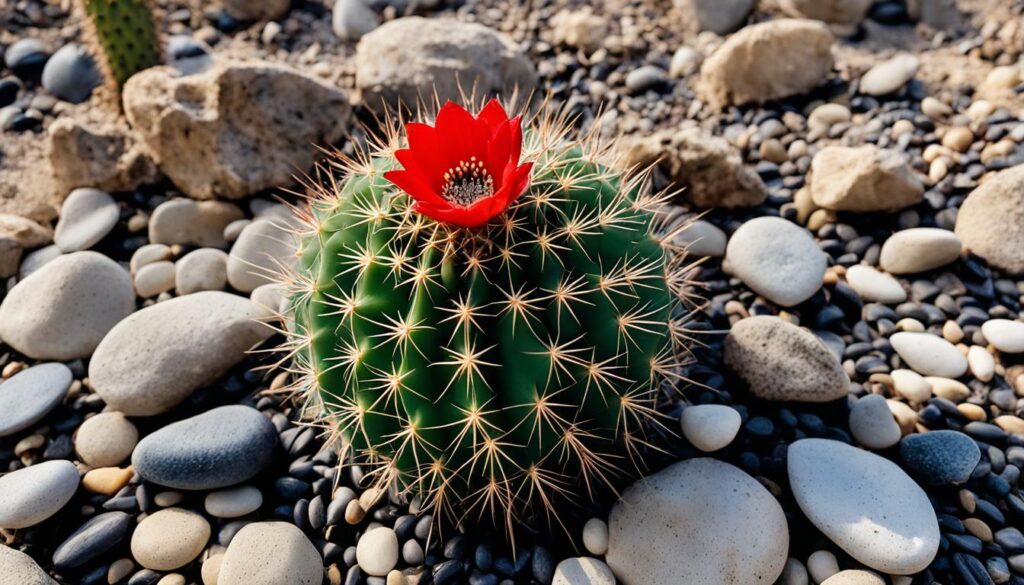Cacti are fascinating plants known for their unique survival strategies and ability to thrive in arid environments. Understanding how cacti reproduce is key to propagating these resilient plants in your own garden or appreciating their natural proliferation in the wild. Cacti employ both sexual and asexual methods of reproduction, ensuring their survival in diverse conditions.
In nature, cacti reproduce through asexual methods that involve the detachment and rooting of segments or pads from the parent cactus. These segments can fall to the ground and take root, or they can hitch a ride on animals, eventually detaching and finding a new location to root themselves. It is remarkable that these detached pieces can survive for months without water, patiently waiting for the right conditions to establish themselves in the soil.
For garden enthusiasts, propagating cacti through asexual reproduction is a popular method. This involves taking cuttings from established cacti, allowing the cut ends to ‘callus’ before planting them in well-drained soil. During the warm season, cacti cuttings have the best chance of successfully growing into new plants. After a month of planting, it is essential to water the young cactus deeply to promote healthy growth.
Another form of reproduction for cacti is sexual reproduction, which involves the production of flowers and seeds. The vibrant and often intricately shaped flowers of cacti attract pollinators, such as insects or even the wind, leading to the fertilization of the flowers. Once fertilized, cacti produce seeds that can be dispersed by animals or the elements.
Cactus seeds provide the opportunity for new plants to germinate and establish themselves. The lifecycle of a cactus begins with the germination of these seeds, leading to the growth of a seedling and ultimately developing into a mature plant. The mature plant then produces its own flowers and seeds, continuing this cycle of reproduction.
Understanding how cacti reproduce is not only beneficial for gardening enthusiasts but also shines a light on the importance of cacti in their natural habitats. Cacti serve as sources of food and water in desert ecosystems, and certain species possess medicinal properties. However, cacti face numerous challenges, including habitat loss due to development and agriculture, the impacts of climate change, and illegal collecting.
In the following sections of this article, we will explore the different methods of cacti reproduction in more detail and discuss the crucial efforts being made to conserve these unique plants and their habitats.
Cacti Reproduction Methods and Lifecycle
Cacti have fascinating reproduction methods and a unique lifecycle. They can reproduce both sexually and asexually, ensuring the continuation of their species in various environments.
Sexual reproduction: Cacti reproduce sexually through the production of beautiful flowers. These flowers are often pollinated by insects or carried away by the wind, facilitating fertilization. Once fertilized, these flowers develop into fruits containing seeds. This process allows for genetic diversity and adaptation within cactus populations.
Asexual reproduction: Cacti also possess the ability to reproduce asexually, ensuring genetic consistency. They achieve this through a process called polyembryony, where multiple embryos develop from a single seed. This phenomenon allows cacti to produce offspring that are genetically identical to the parent plant, known as offsets or clones.
The lifecycle of a cactus begins with germination of the seeds. These seeds require specific conditions, such as warmth and moisture, to initiate growth. Once germinated, a cactus seedling emerges from the soil, developing roots and two cotyledons to provide nutrients.
As the seedling grows, it transforms into a mature plant, characterized by its unique shape and spines. The mature plant then produces flowers, which are essential for sexual reproduction, attracting pollinators to ensure fertilization. After successful pollination, the flowers develop into fruits containing seeds.
The seeds are dispersed through various means, including animals and wind, allowing the cactus’s offspring to colonize different areas. Upon reaching a suitable environment, the seeds germinate, and the lifecycle begins anew. Over time, a cactus may reach a considerable size and age, becoming a resilient and iconic member of arid ecosystems.
When a cactus reaches the end of its lifespan, it undergoes the process of decomposition. The plant breaks down, returning vital nutrients to the soil, contributing to the cycle of life in the desert ecosystem.
Importance of Cacti and Conservation Efforts
Cacti are not only visually appealing as decorative plants but also possess valuable medicinal properties. Certain cacti species contain compounds that have long been used to treat various ailments. In addition to their medicinal value, cacti play a crucial role in desert habitats as important sources of food and water.
Unfortunately, cacti populations are threatened by several factors, including habitat loss, climate change, and illegal collecting. One of the major threats to cacti is habitat loss due to extensive development and agricultural activities. As human civilization continues to expand, natural habitats are being destroyed, resulting in the loss of critical cacti ecosystems.
Climate change exacerbates the challenges faced by cacti. With rising temperatures and prolonged droughts, these desert-adapted plants struggle to survive in their native environments. The changing climate disrupts the delicate balance necessary for their growth and reproduction, posing a significant threat to their populations.
Furthermore, illegal collecting further compounds the conservation challenges faced by cacti. These plants are frequently poached from the wild for decorative purposes, disrupting the natural equilibrium of their habitats and endangering their existence.
In response to these threats, various organizations and conservation efforts are tirelessly working to preserve cacti and their habitats. These organizations aim to raise awareness about the importance of cacti conservation, implement protective measures, and promote sustainable practices to ensure the long-term survival of these unique and invaluable plants.
Could Dropping Leaves in a Christmas Cactus Affect Its Reproduction Process?
Yes, christmas cactus dropping leaves can impact its reproduction process. When a Christmas cactus drops leaves, it may indicate stress or poor conditions, which could affect its ability to flower and produce new buds. Providing proper care and addressing the issue promptly can help restore its reproductive capabilities.










